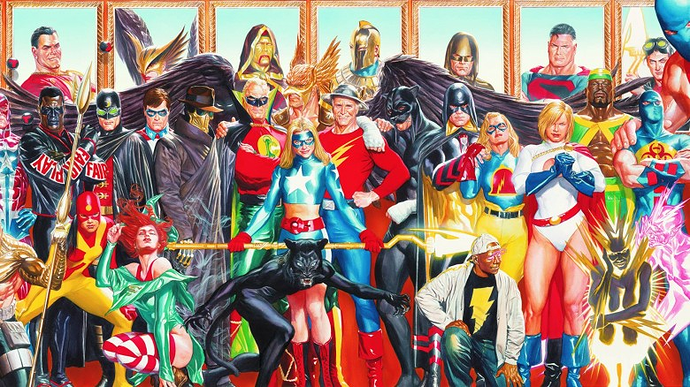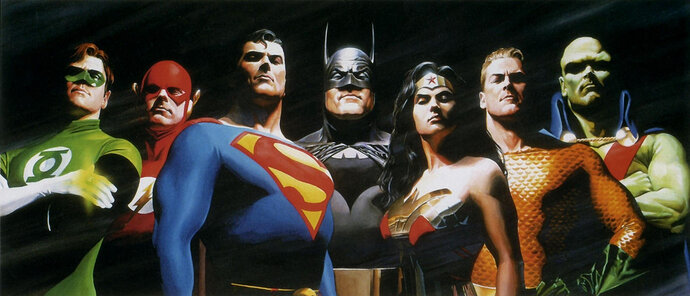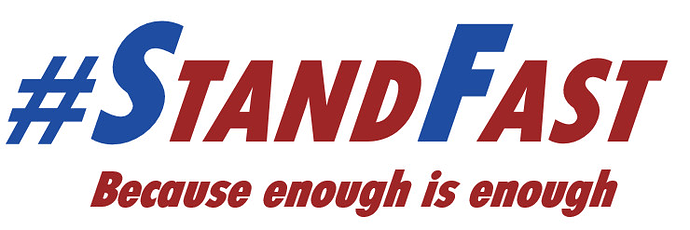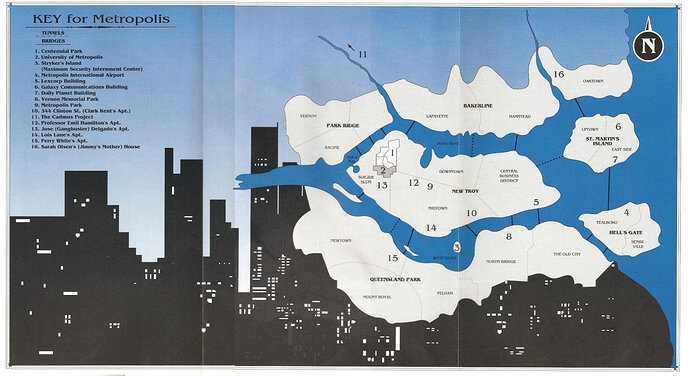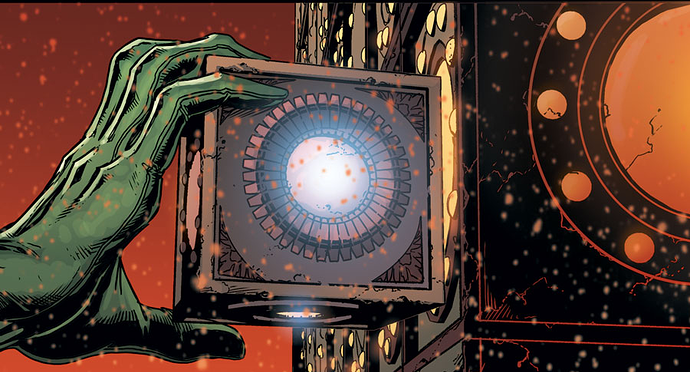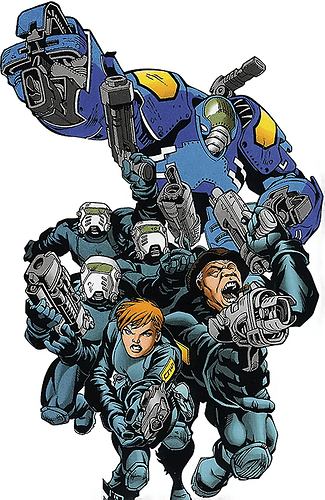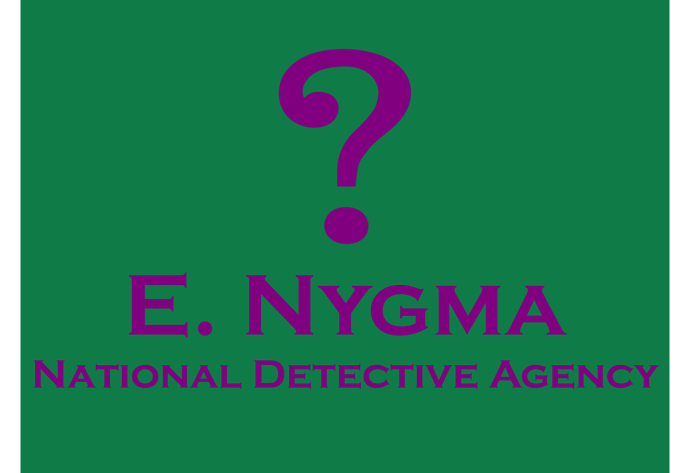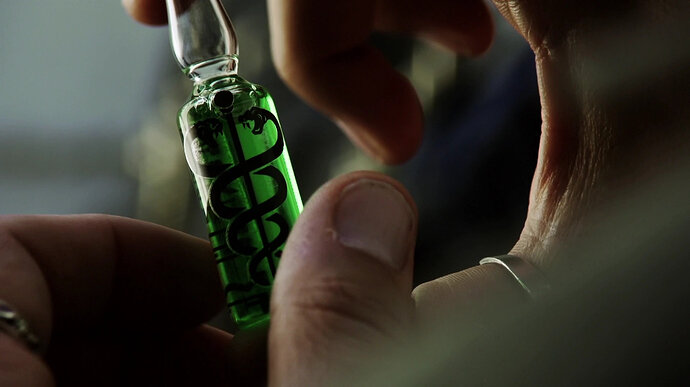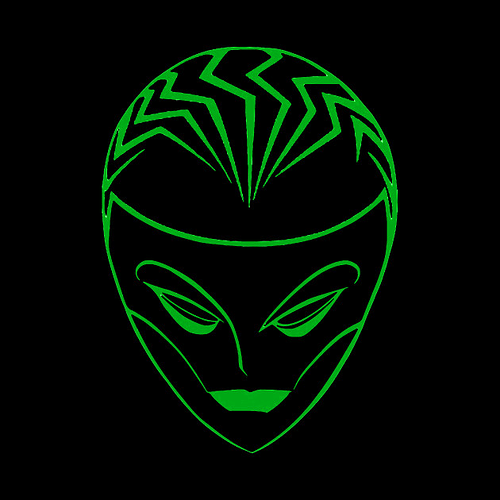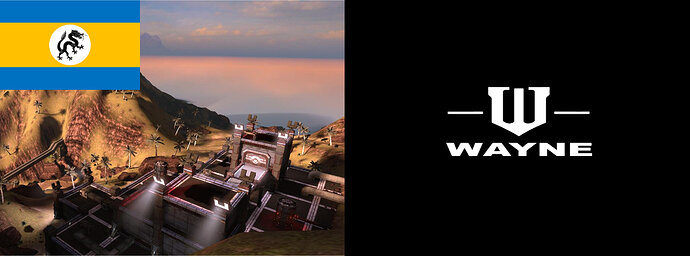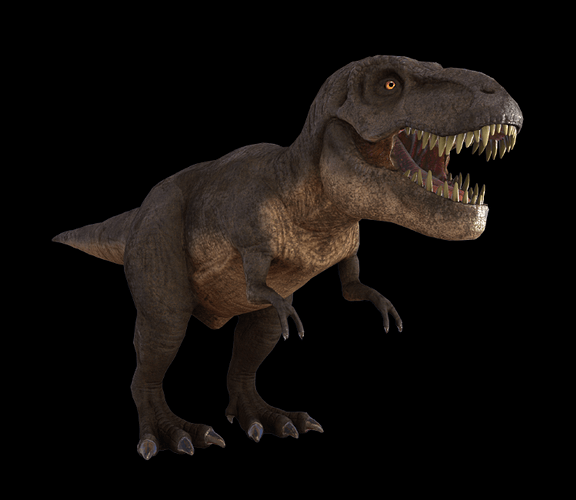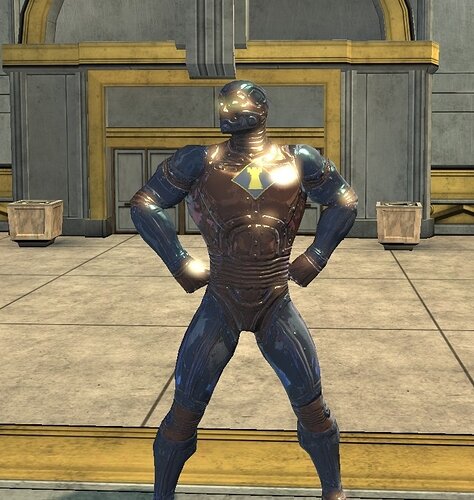I’m sure many of you (if not all of you) know the world of DC Comics: Superman, Batman, Wonder Woman, and many other timeless heroes live here. But this is not their story. Their stories have been and gone. Superman is dead, Batman is retired, and Wonder Woman has embarked on what may be a centuries-long war with the Olympians. But their legacies live on: in their descendants, in their proteges, and in any others who were inspired by their fight for truth and justice.
Now, it is your turn. You are a citizen of the city of Metropolis (or just passing through, or here for business reasons, or, well, who am I to decide for you?), and a new age is beginning: an age which may lead to a new resurgence of heroes, or have them disappear forever. Whose side will you be on?
History
Ever since the dawn of man, there have been heroes: selfless individuals who put the lives of innocents before their own, and fight for justice. I’m sure you know of Achilles, Robin Hood, or maybe even the bounty hunter and outlaw Jonah Hex, but of course that’s not why you’re here. When you think of DC, you think of superheroes: metahumans, masks, mystery-men. People with incredible powers, and an even more incredible fashion sense. And, well, where better to start than the first?
The Golden Age (1938-1951):
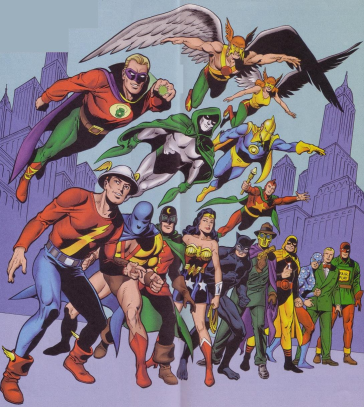
Long ago, the distant world of Krypton was dying, and the only person who realised was a humble scientist known as Jor-El. In the hopes of preserving at least a single one of their race, he sent his only son: Kal-El, to our planet by rocketship. This ship, of course, crash-landed on the Kent family farm in Smallville, Kansas. The Kents soon discovered the child, and decided to adopt him, naming him Clark. From then on, they called the day he had landed his “birthday”, and cared for him as their own.
As we all know, the young Clark would eventually grow up and become the first ever superhero (or at this time “mystery-man”): Superman. Empowered by Earth’s yellow sun, Clark was able to move faster than a speeding bullet, be stronger than a locomotive, and of course: leap tall buildings in a single bound. With these powers in hand, Clark vowed to protect the people of Metropolis, and eventually the world.
His heroic actions inspired other mystery-men: the masked Crimson Avenger, the first Blue Beetle and Green Lantern, as well as many others that would go on to form the Justice Society of America (and the Seven Soldiers of Victory, and the Freedom Fighters, and a few others not worth mentioning), and assist both on the front lines and at home during the Second World War as the All-Star Squadron. Of course, where there were heroes, villains sprang up to oppose them: the Justice Society faced many foes from the Ultra-Humanite to Per Degaton. From here, things stabilized into what you could call (relatively) normal. However, this wasn’t to last.
The Dark Age (1951-1965):
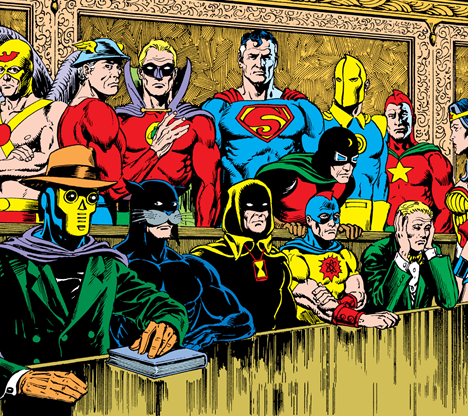
By this time, the US had been very much swept up in the second Red Scare, and increasing suspicion of Soviet spies within the government inevitably led to accusations of Communist sympathisers within the Justice Society itself. Eventually, they were even ordered by the House Committee on Un-American Activities to reveal their true identities so as to be investigated.
In the face of risking the exposure of their identities to the world, and putting their loved ones in jeopardy from certain enemies of theirs who may have decided to enact revenge (though some such as Jay Garrick or Johnny Thunder, whose identities were already public, simply did so on principle), the Justice Society instead chose to disband and retire. The major exceptions were Superman and Wonder Woman, who continued to remain active worldwide. There were others who weren’t a member of the Society that stuck around, but nobody cares about them their efforts were largely discouraged as any remnants were hunted down with stricter vigilante laws.
The Silver Age (1965-1981):
It had been many years since the fall of the Justice Society, and Sylvester Pemberton - who was once known as the mystery-man (or I suppose you could say mystery-boy) the Star-Spangled Kid - made a risky decision. He decided to come back out of retirement to fight crime again, taking on the new moniker Skyman. And more than that, he assembled a new team of heroes: Infinity Incorporated, made up of the children of the mystery-men of the Justice Society. The team also successfully popularised the term “superhero” to make them seem a little more approachable (and all-inclusive), which is still used today.
These actions inspired many other old heroes to come out of retirement, as well as the rise of new heroes: Captain Marvel, the Metal Men, and the second Blue Beetle, to name a few. The Justice Society was even restored, merging with Infinity Inc. to become the Justice Society Infinity.
The Bronze Age (1981-1993):
Once the 70s rolled around, superheroes were very much in the public eye. There came a surge of growth in the mask community which brought many familiar faces such as Green Arrow, Batman, and the second Flash. But it wasn’t until the 80s were kickstarted by the formation of the Justice League, a spiritual successor of sorts to the Justice Society Infinity (which had ironically fallen into obscurity), that the Bronze Age really began. It is quite possibly one of the most famous superhero teams of all time - still active to this day, and has admitted some of the community’s most familiar faces (including former Society members Superman and Wonder Woman, nigh-immortality is great, isn’t it?). This in particular inspired many of the heroes that have had lasting ramifications on the world: Firestorm, Booster Gold, the Atom, etc.
But, while the heroes became increasingly famous, so did the villains. Some of the most dangerous and ruthless individuals to ever walk this earth rose to power in these days: the Joker, Amanda Waller, Alexander Luthor (Jr.) - the list goes on. Great horrors like Chemo - a monstrous mass of toxic and corrosive chemicals housed in a semi-sentient, thick plastic shell - reared their ugly heads. Increasingly dangerous threats invaded from space, and even other dimensions.
Some became less trusting of heroes, and the damage their antics caused. Regardless, through it all, the heroes stood tall: there were more teams of heroes active then than there had ever been before. Even in the darker times: when Batman permanently quit the Justice League, when the Flash disappeared without a trace - the heroes seemed unbreakable.
Seemed, being the operative word.
The Modern Age - also known as the Second Dark Age, or the Obsidian Age (1993-present)
On January 2nd, 1993, at about four o’clock: Superman died. After defeating his greatest ever foe, helpless to prevent Metropolis’ near-destruction in the process, Superman drew his last breath. That’s it. No sugar-coating, no resurrections. The Man of Steel was no more.
And it changed everything.
Hundreds of people attended his funeral, and hundreds of thousands more tuned in to watch it worldwide. It was the single moment where the world, as one person, wept for their fallen champion. A memorial statue was erected in Centennial Park, Metropolis, where he was buried. January 2nd became known as “Doomsday”, after the foe that slew him, which was effectively a memorial day for all superheroes that sacrificed themselves for the greater good.
And it wouldn’t take long for others to fall: Blue Beetle was shot dead, the young hero Spoiler was murdered by Black Mask, and a Parallax-possessed Hal Jordan decimated the entire Green Lantern Corps. Worse still was the beginning of the OMAC Crisis, when Wonder Woman snapped the neck of its perpetrator: Maxwell Lord. If people’s faith in heroes had been wavering before, this sealed it. It had gone too far.
But even this wasn’t it for our heroes. They bounced back, like they always had. New heroes rose to honor their legacy and their sacrifice: Jaime Reyes became the new Blue Beetle, Kyle Rayner the new Green Lantern, and Superman’s son Jonathan Kent continued his legacy as the hero Daybreak.
In this time, the superhero also gained a larger presence worldwide, with initiatives such as Batman Incorporated and the expansion of the Justice League: International (which was first established back in 1987). For better or for worse, the UN was taking greater care in regulating the actions of heroes than ever before.
The New Age?
For some people, however, this isn’t enough. The strong belief is that if these heroes had never appeared at all, then many of the villains that entice them with their byzantine schemes, and the galactic-level threats that now attempt to invade or destroy the planet on an annual basis wouldn’t have either. As the world demands change, it may just be getting its prayers answered.
Only time will tell how far the demands of the StandFast movement will get into policy (some have shown their support for these concerns, including Lex Luthor, who will astonishingly be running for a second term in this coming election), but superheroes haven’t been under this much threat of disappearing completely since the end of the Golden Age.
Location(s)
The DC Universe is a pretty big place, so I’ve taken the liberty of choosing a hub for you. You’re free to head to other locations if you have a good idea where to go (or I might expand it later if this gets big enough), but for now this is where most everything will happen and where everyone starts off:
Metropolis:
(If you open the image in a new tab with a right click you’ll have a much better time reading what’s on it ![]() )
)
Well-known as the home of the late Superman, Metropolis is one of the most famous cities in the world. Located in Delaware, the City of Tomorrow is the seat of many successful businesses, including Daily Planet Newspaper Ltd, and LexCorp. It is also a place of great technological development, as the birthplace of S.T.A.R. (Science and Technology Advanced Research) Laboratories, as well as housing branches of both WayneTech and Stagg Enterprises. With these in mind, in Metropolis in particular, technology has advanced much further beyond that of today (expanded on a bit further down).
For those of you wishing for a more street-level experience, there’s the Southside neighbourhood - known almost exclusively as the Suicide Slum by locals due to having the highest crime rate and some of the lowest property prices in the entire city. It’s been the stomping ground of several heroes (and for that matter, villains) from Black Lightning to the Guardian over the years, but there’s always room for more.
The posterboy hero of Metropolis these days, though, is Daybreak: the half-Kryptonian son of the Man of Tomorrow (not that that’s common knowledge, of course), who maintains his legacy to this day.
Other points of interest include the previously mentioned Superman Memorial Statue in Centennial Park, and Stryker’s Island Penitentiary, which on top of holding some of the city’s worst criminals, is also equipped (largely thanks to the efforts of researchers at S.T.A.R. Labs) to contain metahumans.
Legacies
When I originally created this segment for the RP introduction to give a bit of a window into some of the major figures of this semi-adaptation of DC canon, I had not anticipated the 50 page essay that I ended up with. Given the sheer number of images (which can’t be copied from Google Docs to other places, by the way), and the sheer amount of text, alongside the possibility that this list could even grow in the future (though that’s a long way off, I definitely want to take a break from writing these for the time being), it just seemed impractical to throw all of it out here on the signup sheets topic.
Instead, I offer a separate Google Docs link for your reading pleasure: Legacies - Google Docs
Think of it as sort of a drunken ramble that attempts to summarise the history of New Earth while skipping out the crises and copious resurrections (for the most part), and accidentally mixes in a dash of Earth 1, probably some Earth 2, and Prime Earth in the process. ![]()
While this is in no way essential reading, I do think it may enhance your experience to take a look at how far this world has come over the decades, and the general place it’s in now. And, if you do choose to read, I hope you enjoy, and hope that my prose doesn’t wear too thin on you. ![]()
Technology
Our awareness of extraterrestrial life, even as close as our sister planet of Mars, or the highly advanced peoples of Atlantis and Gorilla City, have allowed for accelerated technological development in a number of areas. Mechanical exoskeletons are employed not only in a military capacity, but also in high-risk jobs such as construction, where the extra strength and protection gained from such a machine are welcome.
Our forays into space have also greatly advanced, including several permanent Moon bases for economic, military intelligence, and scientific reasons. This is greatly aided by Zeta beam technology - allowing near-instant transportation from one place to another. It’s still far too energy-intensive and expensive for general public use, but it is incredibly useful in military and exploratory capacities.
Medicine has also benefited, with advancements in nanotechnology, genetics, and biomechanical interfacing. Potentially crippling injuries that would paralyse an individual for life are now treatable, if expensive. And while there would never be one single cure for cancer, treatments have advanced greatly - able to save even more than before, in particular thanks to the cryogenics research pioneered by Dr. Victor Fries.
Most drastic of all, though, is probably the Mother Box. While Intergang may have access to Apokoliptian technology thanks to their previous ties with Darkseid: that’s nothing compared to the power of a Mother Box. Able to access the incredible energies of the Source - from which life and ultimately the universe originates - the closest approximation of a Mother Box is a portable, sentient supercomputer.
The only known Mother Boxes have been forged either on New Genesis or Apokolips by the New Gods, and their qualities and full potential are somewhat mysterious even to them. Only a scant few of the devices are present on Earth, and are highly coveted, highly classified, and highly restricted pieces of equipment. They’ve been able to manipulate the flow of reality, create Boom Tubes to transport a user from one location to another, and even heal someone from the most grievous of injuries. Any attempts so far to reverse-engineer Mother Boxes have been unsuccessful, as to our science, even now, these devices are effectively magic. But, of course, that won’t stop us from trying.
Other Factions
Metropolis is a big place, and the superheroes and supervillains aren’t the only ones running around. There are several other organizations who factor into their world as active players that aren’t strictly heroes or villains (usually just some kind of law enforcement or organized crime), but regardless: they and their history are also worth mentioning.
Metropolis Special Crimes Unit:
A branch of the greater Metropolis Police Department, the SCU was a task force first formed in 1987 which specialized in resolving criminal matters that were otherwise considered too extreme for the average police officer to handle. As much as the city loved Superman, he couldn’t always be around, especially as his focus shifted away to worldwide matters. They would often come to Superman’s aid, and even saved his life on a few occasions. Maggie Sawyer, the head of the unit, became the primary contact of the Man of Steel, essentially working as a liaison between him and law enforcement across the city. They butted heads, at first, but eventually became close allies.
Following Superman’s death, the unit began to take a more active role in defending Metropolis full-time. With assistance from S.T.A.R. Labs, the SCU reverse-engineered a Kryptonian Warsuit previously used by Lex Luthor and developed a new “Simm-Bot” armor for their officers. Even as Daybreak began to come into his own, the SCU continued to expand technologically and grow in number to thwart a greater number of threats in the city. Other cities with similar issues such as Central City and Gotham would follow suit with similar units, also often supported by S.T.A.R. (or, in the case of Gotham: WayneTech).
To this day, Maggie continues to lead her division and maintains a good relationship between general law enforcement and heroes in the city. However, as she continues to age, it’ll only be a matter of time before she retires.
E. Nygma:
The E. Nygma National Detective Agency was established by, well, Edward Nygma, in 1993. After watching Superman’s last battle unfold, and the grief that struck the nation in the wake of his death: the legacy of a national and worldwide hero cut short by a tragic and selfless demise, Nygma was inspired to begin doing his part to make the world a better place. To this end, he created a detective agency named E. Nygma (after himself, of course), where he would take fledgling detectives and put them through months of training and several scrutinising tests, which would allow them to develop into great logical thinkers.
The agency began just in Gotham, but as his agents received continuous congratulations for their deductional prowess, the agency received government funding, and firms were subsequently set up in every major city in the US. Among the local police departments of these cities, E. Nygma are something of an annoyance. E. Nygma will often personally involve themselves in any case relating to organized crime or murder, and will often solve these cases much faster than the police ever could.
This, coupled with the smug attitudes of the majority of their agents, is one of many reasons for their lack of popularity amongst the boys in blue. Another reason, is that among many cops they simply aren’t trusted. They’re of the (understandable) opinion that because of the agency being founded by a former criminal, the whole organization is untrustworthy, and likely corrupted. Regardless of their thoughts on the matter, though, the agency is very popular with the FBI, and so the cops can’t really do anything about it.
Intergang:
Intergang was a criminal organization armed with technology supplied by the New Gods of the planet Apokolips, and originally acted as a resource to track down the Anti-Life Equation which would enable the New God, Darkseid, to enslave all living things in the universe.
Intergang was originally run by the corrupt television mogul Morgan Edge, until a heart attack removed him from power. After Edge’s illness, Bruno Mannheim took the reins of power. However: Intergang’s days of terrorizing Metropolis were put to an end thanks to reporting done by Clark Kent and Catherine Grant.
The operation came back to life under Boss Moxie, Mannheim’s father, and Intergang resumed its criminal ways while no longer tied to Apokolips. Moxie lost control of the business, however, after a failed attempt by Edge to regain control. Instead, Lex Luthor began secretly running the organization, with Moxie as his mouthpiece. After Superman intervened and captured Moxie, leadership fell to Frank Sixty, a criminal specializing in cybernetics.
Later, Mannheim returned and regained control of Intergang, reorganizing it along quasi-religious lines, complete with a “holy” text known as the Book of Crime or the Crime Bible. Along with many other liberties taken with the good book, the Crime Bible treats Cain as a semi-divine figure for his role in creating the “most sacred” crime of murder. Their modus operandi now largely sits on the “laws” set out by the book, and their criminal activities still persist with the aid of Apokoliptian technology (which has since trickled into the black market).
StandFast:
Superheroes, as has been shown, are controversial figures. Over the years, many individuals have attempted to restrict, discredit, or entirely eradicate the “mask” community, with varying amounts of success. But even among their supporters, there is a consensus that sometimes, heroes are more trouble than they’re worth.
Enter StandFast, a movement that started with a trending hashtag, which sounds pretty ridiculous given what they’ve managed to achieve now. StandFasters call for the criminalization of all heroes as vigilantes, insisting that powers are the problem, not the people who use them. Instead, civilians would take matters into their own hands, taking up arms and putting up civil resistance against heroes, and using lethal force against villains. Unsurprisingly, Maxwell Lord, with his beliefs and his death at the hands of a world-famous hero, is something of a martyr to the StandFasters: proof that heroes must be held accountable for their actions.
At the forefront of this campaign is a suburban housewife from the Metropolis borough of Park Ridge named Samantha Kelly. She started the hashtag a few years ago, after retweeting a news article depicting the wreckage of Metropolis University gym caused by a battle between Daybreak and Atomic Skull. Alongside the image, she wrote the following caption: “The fact that masks are still allowed to behave like this is disgusting. Daybreak is only lucky that nobody was seriously injured. Enough is enough. We need to #StandFast”.
Many political figures have stood in solidarity behind the StandFast movement, including the independent presidential candidate Lex Luthor, who has pledged to consider their concerns in his policies should he be elected. This could even include outlawing heroes altogether as a danger to the public.
The Snakebite Gang:
Venom 2-X (or “Snakebite”, as it’s known on the streets) is a highly addictive drug combining the substances known as Venom and Vitamin 2-X to create the ultimate steroid. When injected, along with an increased muscle mass of 25%, the user experiences an increase of activity in the cerebellum and a decrease virtually everywhere else in the brain. This means the user is significantly stronger, but also significantly less reasonable.
It was developed by chemists working for Gemelo, a company that secretly supplies the drug lord known only by his alias “Quetzalcoatl”, who leads the Southside-based “Snakebite Gang”. The drug is distributed throughout the Suicide Slums, and is incredibly lucrative. With his high street cred, Quetzalcoatl revels in the glory of being the “king” of Southside. He’s known for his unique sense of style, wearing wayfarer shades, a colorful bandana with a feathered snake emblazoned on it, and a matching snakeskin tracksuit. He also keeps a pet boa constrictor called Toño, which gets injected with a daily dose of Venom 2-X and, according to rumor, eats Quetzalcoatl’s enemies.
Misc. Roles
Superheroes, in the early days, were pretty much self-made. They made their own costumes (and potential gadgets), got their own intel, and worked their own cases. The costumes part is especially obvious if you take one look at the heroes of the 40s, but I digress.
As heroes became more mainstream in the Bronze Age and so on, business centered around heroes would inevitably grow, and allow for up-and-coming heroes to take shortcuts. Especially in the Modern Age of heroes, you have an entire network of people who do things for heroes, without necessarily being one themselves (though some are): suit-crafters, gadgeteers, and of course the monolith that is Project: Oracle. For obvious reasons, they have strict client confidentiality across the board. Villains of course also have their own support networks with similar roles to those of the heroes, also listed here.
Project: Oracle
Founded by the Oracle herself Barbara Gordon (the Administrator, to those who don’t know her personally), Project: Oracle is essentially designed to expand the scope and potential of her brilliant idea: an online database for all things superhero. She’s getting older, and something so ambitious can’t be done alone, which necessitated the formation of the greatest coalition of white-hat hackers the planet has ever seen.
You’re welcome.
Pretty much any modern hero with any level of standing makes use of Project: Oracle in some form, as it’s basically an essential at this point. Access to their database is done via computer (obviously), though the links are secret to anyone not “in the know”, to keep civilians (and more importantly: prying villains) from accessing the precious data and potentially exposing some secret identities in the process. The equivalent role on the villain’s side is filled by the Calculator, AKA Frank Cuttler, and his “Undernet”.
Suit-Crafters:
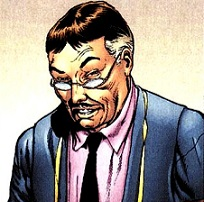
This pretty much speaks for itself. Superheroics are a dangerous thing, especially if your identity is public, which of course necessitates a way to hide said identity. The traditional way is to have a super-suit, and indie suits can be… interesting. The idea may be there, but the means are far more complicated, which lead to the formation of the surprisingly important suit-crafting business.
Most typically, a suit-crafter will be a freelancer that produces specialised, hand-crafted suits for each client (though these independent endeavours can grow into small businesses in some cases). These are usually pretty pricey, given the materials and work that goes into making them, meaning that especially younger solo heroes can have trouble here. But of course, depending on whether or not you know the person, you can probably get a “do me a solid” discount.
Obviously, villains need suits too, and there’s a fair share who will make suits for anyone, regardless of how they’ll be used. Notable examples include a crafter in Gotham known simply as “the Tailor”, and Paul Gambi, who rather infamously made the costumes of the Flash villains known as the Rogues.
As a fun bit of trivia, suit-crafting was technically pioneered by Martha Kent, who actually sewed Clark’s original costume for him.
Gadgeteers:
This is rather self-explanatory as well. While a lot of the more well-known heroes who employ gadgets do so primarily under their own power (and usually with a pretty full wallet), there are now a lot of places where you can get some made for you (prices vary). The typical choice, again, is freelancers, but for those able to pay the higher price: there’s the likes of WayneTech for heroes, or any number of shady mad science weapon manufacturers found on Oolong Island for villains.
